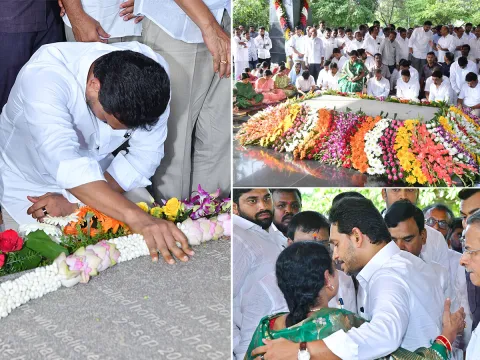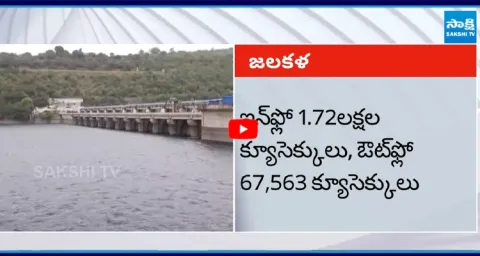Directions (Q.1-5): In each question below are given two statements followed by two conclusions numbered I and II.
Reasoning
Directions (Q.1-5): In each question below are given two statements followed by two conclusions numbered I and II. You have to take the given statements to be true even if they seem to be at variance with commonly known facts and then decide which of the given conclusions logically follows from the given statements, disregarding commonly known facts.
Give answer
1) If only conclusion I follows.
2) If only conclusion II follows.
3) If either conclusion I or II follows.
4) If neither conclusion I nor II follows.
5) If both conclusions I and II follow.
1. Statements:
All scales are straight.
No straight is round.
Conclusions:
I. At least some scales are round.
II. No scales is round.
2. Statements:
No poor is a rich.
Some rich are big.
Conclusions:
I. No big is poor.
II. Some big are definitely not poor.
3. Statements:
Some TVs are colourful.
All colourful are attractive.
Conclusions:
I. At least some TVs are attractive.
II. All attractive are colourful.
4. Statements:
All chocolates are tasty.
All tasty are expensive.
Conclusions:
I. All expensive are chocolates.
II.At least some expensive are tasty.
5. Statements:
Some chairs are red.
Some red are sofas.
Conclusions:
I. Some sofas are chairs.
II. No chair is sofa.
Directions (Q. 6-10): In these questions, a relationship between different elements is shown in the statement(s). The statements are followed by two conclusions.
Give answer
1) If only conclusion I is true.
2) If only conclusion II is true.
3) If either conclusion I or II is true.
4) If neither conclusion I nor II is true.
5) If both conclusions I and II are true.
6. Statement: A ³ B = Q > C £ L
Conclusions:
I. C < A II. L ³ B
7. Statements: A > Y ³ L> K < R
Conclusions:
I. Y > K II. A > R
8. Statements: R = B £ C> D
Conclusions:
I. R > D II. D ³ B
9. Statement: T ³ P > N = A £ K
Conclusions:
I. T ³ K II. T < K
10. Statement: P ³ Q £ R = T > S
Conclusions:
I. P > S II. S ³ Q
Directions (Q.11-16): Study the following information carefully and answer the questions given below:
B, M, T, R, K, H and D are travelling in a train compartment with III- tier sleeper berth. Each of them has a different profession of Engineer, Doctor, Architect, Pharmacist, Lawyer, Journalist and Pa-thologist. They occupied two lower berths, three middle berths and two upper berths. B, the Engineer is not on the upper berth. The Architect is the only other person who occupies the same type of berth as that of B. M and H are not on the middle berth and their professions are Pathologist and Lawyer respectively. T is a Pharmacist. D is neither a journalist nor an Architect. K occupies same type of berth as that of the Doctor.
11. What is D's profession?
1) Doctor 2) Engineer 3) Lawyer 4) Pharmacist 5) Data inadequate
12. Which of the following group occu-pies middle berth?
1) DKR 2) DHT
3) HKT 4) DKT
5) None of these
13. Which of the following combi-nations of person-berth-profession is correct?
1) R-Lower - Journalist
2) R-Lower - Architect
3) D-Upper - Doctor
4) K-Upper - Lawyer
5) All are correct
14. Which of the following pairs occupy the lower berth?
1) BD 2) BR 3) BT 4) Data inadequate 5) None of these
15. Who is Architect?
1) D 2) H 3) R 4) Data inadequate
5) None of these
16. Which of the following pairs occupy the upper berth?
1) BD 2) BR 3) MH 4) Data inadequate 5) None of these
Directions (Q.17-21): Each of the questions below consists of a question and two statements marked I and II given below it. You have to decide whether the data provided in the statements are sufficient to answer the question. Read both the statements and
Give answer
1) If the data in statement I alone are sufficient to answer the question, while the data in statement II alone are not sufficient to answer the question.
2) If the data in statements I alone are not sufficient to answer the question, while the data in statement II alone are sufficient to answer the question.
3) If the data either in statement I or in statement II alone are sufficient to answer the question.
4) If the data even in both the statements I and II together are not sufficient to answer the question.
5) If the data in both statements I and II together are needed to answer the question.
17. Towards which direction Ravi is finally facing?
I. Ravi travelled towards north direction and he took right. He went further turned 90° Anti clockwise
II. Early in the morning at 6 AM, when Ravi went for a walk he observed that his shadow is falling on his left side.
18. Who amongst A, B, C, D, E and F is the heaviest?
I. A is heavier that C and E but not as heavy as F, who is heavier than B and D.
II. C is the third in Weight in the ascending order and not as heavy as F, A and B. B being heavier than A, but is not the heaviest.
19. Is P the sister of Q?
I. Q is the son of R. R is also the father of P.
II. S is the wife of R, and this couple has two sons and only one daughter.
20. On which day was Lavanya born?
I. Her mother correctly remembers that Lavanya was after 12th and before 17th of February.
II. Her father correctly remembers that Lavanya was born neither on even number date nor on a prime number date.
21. What is Krishna's rank in the class of 50 students?
I. Kalpana, whose rank is 28th in the class from the bottom, is ahead of Krishna by 6 ranks.
II. There are two ranks between Krishna's and Venkat's rank, whose rank is 26th from the top.
Directions (Q.22 - 27): Study carefully the following arrangement of letters, digits and symbols to answer these questions.
M 7 £ 8 L P @? 6 N b T Y 3 2 = E $ 4 9 © G H 5
22. How many such letters are there in the arrangement each of which is immediately followed by a num-ber?
1) Three 2) Four 3) One
4) Two 5) None of these
23. How many such symbols are there in the arrangement each of which is immediately preceded by a number?
1) Two 2) Three 3) Four 4) Nil 5) None of these
24. If all the symbols are deleted from the arrangement, which of the follo wing will be fourth to the left of the 17th element from the left end?
1) 9 2) E 3) 2
4) 4 5) None of these
25. '78' is to 'P? 6' and '? N' is to 'T32' in the same way as '2E' is to ___ in the arrangement.
1) 4©H 2) 49G 3) 4©G 4) 9GH 5) None of these
26. If all the numbers are deleted from the arrangement then which of the following will be fifth to the right of the 13th element from the right end?
1) b 2) N 3) Y 4) T 5) None of these
27. Which of the following letters is as far away from M to the right as G is away from N?
1) b 2) N 3) Y 4) T 5) None of these
Directions (Q.28-32): Study the following information carefully and answer the questions given below:
Eight friends E, F, G, H, J, L. M and N are sitting around a circle facing the centre. E sits fourth to the right of F. H sits second of the left of F. J sits third to right of M and M is not an immediate neighbour of H. G is not an immediate neighbour of E and N sits second to left of G.
28. In which of the following groups of people is the third person sitting exactly in the middle of the first and the second person?
1) HLE 2) MGL 3) MFJ
4) HFN 5) None of these
29. Four of the following five are alike in a certain way based on their positions in the above arrangement and so form a group. Which is the one that does not belong to that group?
1) EN 2) FL 3) ME 4) LH 5) NM
30. Which of the following pairs repre-sents the immediate neighbours of M?
1) LE 2) JH 3) LG
4) FG 5) None of these
31. Starting from E, if all the friends are made to sit in the alphabetical order of their names in the anti-clockwise direction, the positions of how many (except E) will remain unchanged?
1) None 2) One 3) Two 4) Three 5) More than three
32. Who sits third to the right of F?
1) J 2) L 3) H
4) M 5) None of these
Directions (Q.33-37): Study the following statements carefully and answer the questions given below:
In a certain code language 'go to school' is coded as 'ba la ka', 'I go there' is coded as 'nu ka ma', and 'school is there' is coded as 'da ba nu'.
33. What does 'la' stand for?
1) go 2) school 3) to
4) cannot be determined
5) None of these
34. What is the code for 'there' ?
1) da 2) nu 3) either da or ba
4) ba 5) None of these
35. How will 'I' be coded?
1) ma 2) nu 3) ka
4) either ma or ka 5) None of these
36. What may be the code for 'you may go there'?
1) ka nu pa za 2) pa za nu la
3) pa za ka la 4) pa za ba da
5) pa za nu ma
37. What is the code for 'go'?
1) la 2) nu 3) ma 4) ka 5) ba
Key
1) 2; 2) 2; 3) 1; 4) 2;
5) 3; 6) 1; 7) 1; 8) 3; 9) 3; 10) 4; 11) 1; 12) 4; 13) 2; 14) 2; 15) 3; 16) 3; 17) 3; 18) 3; 19) 4; 20) 5; 21) 1; 22) 1; 23) 2; 24) 4; 25) 3; 26) 4; 27) 3; 28) 4; 29) 3; 30) 3; 31) 2; 32) 2; 33) 3; 34) 2; 35) 1; 36) 1; 37) 4.













